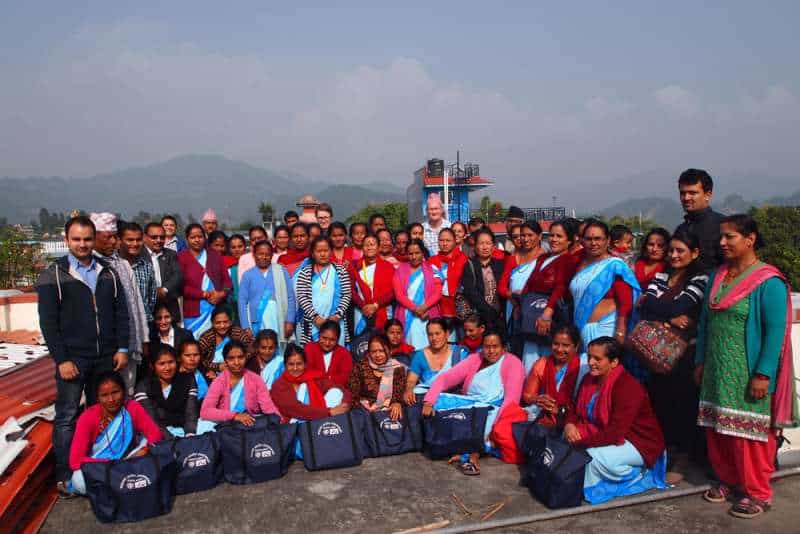According to a latest study published by a Duke Kunshan researcher, a life-style intervention led by a group of female community health volunteers turned out to be effective in reducing high blood pressure in the general population of Nepal. The report was published in the Lancet Global Health, including a podcast that features the leading author’s discussion on the prospects of the intervention to change hypertension management program practices at the community level.
In the study, forty-three female community health volunteers were trained as part of the intervention from Lekhnath Municipality of Nepal. They were given a five-day course on screening blood pressure and measuring height and weight, as well as training so they could provide counselling on heathy lifestyles and diet. And they were equipped with an electronic blood pressure device, scales and a tape measure. The volunteers then visited the selected households three times in a year for providing health promotion messages and screening the blood pressure. This has led to a significant reduction in blood pressure not only among hypertensives but also those who had blood pressure below the diagnosis threshold of 140 mmHg.
‘Our study has given a crucial piece of evidence that community health workers can be instrumental in the blood pressure reduction through lifestyle modification,’ says Dr. Dinesh Neupane, a non-communicable-disease (NCD) post-doctoral fellow at the Global Health Research Center of Duke Kunshan University who led the study while he was studying at the Aarhus University in Denmark.
Previous studies have established that even a small drop in blood pressure at the population level is beneficial for reducing cardiovascular disease events and mortality. More specifically, a reduction of 5 mmHg reduces the death of strokes by 14 per cent, death of coronary heart disease by nine per cent and mortality from all causes of death by seven per cent.
“Our intervention prevents new cases of high blood pressure. There was a 53 per cent higher risk of developing high blood pressure in the control group compared to the intervention group,” explains Dr. Neupane.
‘In summary while these outcomes are exciting, there is always more work to be done, for improving the length of follow-up of the individuals, as well as assessing the sustainability of the intervention’, says Dr. Neupane. A longer follow-up duration with a large sample size is needed to see how sustainable the blood pressure reduction is, in the long term. Also, it is imperative to convince health authorities to promote and fund such programs.
‘The results of this study in Nepal are relevant to other low and middle-income countries including China;’ says Prof. Lijing L. Yan, Head of NCD Research at Duke Kunshan University ‘we should investigate how the intervention can be adapted to the community context in China to prevent and reduce the burden of hypertension-related diseases.’
Every year 10 million people die due to hypertension related events worldwide. Over 85% of these cardiovascular related deaths occur in low and middle-income countries. In both China and Nepal, about one in four adults have high blood pressure, and approximately half of them do not know they have it.

Dr. Neupane (3rd from left, 2nd row) and other researchers with female community health volunteers

